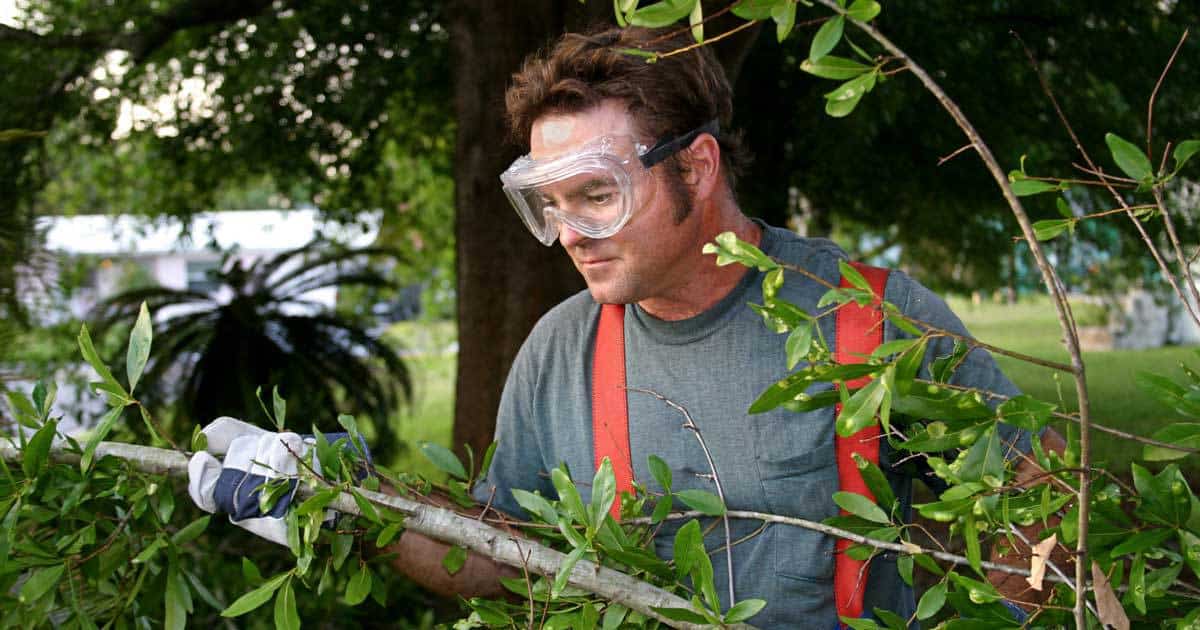How to Protect Your Eyes During Outdoor Activities

This article aims to provide comprehensive guidelines on protecting one’s eyes during outdoor activities.
It highlights the importance of eye protection and emphasizes the detrimental effects of UV radiation.
The article also offers insights into selecting appropriate sunglasses and protective eyewear for various sports and outdoor pursuits.
Furthermore, it provides tips on maintaining proper eye care in different weather conditions and preventing eye strain caused by digital devices outdoors.
Lastly, it addresses common eye injuries and offers preventative measures to avoid them.
Key Takeaways
- Wearing protective eyewear is crucial during outdoor activities to prevent eye health issues.
- Exposure to UV radiation can lead to conditions like cataracts, macular degeneration, and pterygium.
- Sunglasses should block both UV and blue light to protect the eyes.
- Protective eyewear is important for minimizing the risk of eye injuries during sports and outdoor activities.
The Importance of Eye Protection
Eye protection is crucial during outdoor activities due to the potential risks posed to the eyes by various environmental factors. Engaging in outdoor activities without adequate eye protection can result in a range of eye health issues. Wearing protective eyewear can help prevent injuries caused by UV radiation, dust, wind, and foreign objects.
Exposure to UV radiation can lead to various eye conditions such as cataracts, macular degeneration, and pterygium. By wearing sunglasses or goggles that block out harmful UV rays, individuals can reduce their risk of developing these conditions.
Additionally, children are particularly vulnerable to eye injuries during outdoor activities. Providing children with appropriate eye protection, such as impact-resistant goggles, can help safeguard their eyes and prevent long-term eye health problems.
Understanding UV Radiation
UV radiation is a form of electromagnetic radiation that is emitted by the sun and has harmful effects on human health. Exposure to UV radiation can lead to various health issues, including sunburned eyes and the detrimental effects of blue light on eye health.
Sunburned eyes, also known as photokeratitis, is a condition in which the cornea and conjunctiva become inflamed due to excessive exposure to UV radiation. This can cause symptoms such as eye pain, redness, and sensitivity to light.
Additionally, blue light, which is a component of UV radiation, can potentially damage the retina and increase the risk of age-related macular degeneration.
To protect the eyes from these harmful effects, it is important to wear sunglasses that block both UV and blue light and to avoid prolonged exposure to sunlight, especially during peak hours.
Choosing the Right Sunglasses
When selecting sunglasses, it is important to consider factors such as lens material, frame design, and lens color in order to ensure optimal protection from harmful radiation.
Different face shapes require different styles of sunglasses to achieve a proper fit and maximum protection. For example, individuals with a round face shape should opt for sunglasses with angular frames to add definition to their facial features. On the other hand, individuals with a square face shape should choose sunglasses with round or oval frames to soften their facial angles.
Additionally, it is crucial to clean and maintain sunglasses properly to prolong their lifespan and ensure clear vision. To clean sunglasses, one should use a mild soap or lens cleaner, and a microfiber cloth to avoid scratching the lenses. Regular maintenance, such as checking for loose screws or adjusting the frames, is also essential for optimal performance.
Protective Eyewear for Sports and Outdoor Activities
Sports and outdoor activities require the use of appropriate protective eyewear to minimize the risk of eye injuries. This is particularly important because the eyes are vulnerable to various hazards like flying debris, UV radiation, and water splashes.
When it comes to protective eyewear, polarized lenses offer several benefits. Firstly, they reduce glare caused by reflections, improving visual clarity and comfort. Secondly, they enhance contrast and color perception, making it easier to see objects and obstacles clearly. Lastly, polarized lenses provide 100% UV protection, shielding the eyes from harmful sun rays.
In the case of water sports, different types of goggles are available to suit specific needs. These include swimming goggles, snorkeling masks, and diving masks, each designed to provide a watertight seal and clear vision underwater, ensuring optimal eye protection in aquatic environments.
Tips for Proper Eye Care in Different Weather Conditions
Different weather conditions can pose challenges to eye health, and it is important to take appropriate measures to ensure proper eye care in varying climates. Extreme temperatures can have adverse effects on the eyes, such as dryness, irritation, and even corneal damage. In hot climates, it is crucial to protect the eyes from excessive sun exposure and UV radiation, which can lead to conditions like cataracts and macular degeneration. In cold climates, the cold and dry air can cause discomfort, dryness, and redness in the eyes. Additionally, outdoor activities can expose the eyes to dust, debris, and allergens, increasing the risk of eye infections and allergies. Wearing protective eyewear, such as sunglasses, goggles, or face shields, can help in shielding the eyes from these external factors. Regular eye hygiene practices, such as washing hands before touching the eyes and avoiding rubbing the eyes excessively, are also essential.
| Weather Conditions | Challenges to Eye Health | Protective Measures |
|---|---|---|
| Extreme Temperatures | Dryness, irritation, corneal damage | Wear sunglasses with UV protection |
| Use artificial tears to combat dryness | ||
| Avoid prolonged exposure to extreme temperatures | ||
| Outdoor Activities | Dust, debris, allergens | Wear protective eyewear |
| Wash hands before touching the eyes | ||
| Avoid rubbing the eyes excessively |
Preventing Eye Strain From Digital Devices Outdoors
Preventing eye strain from digital devices outdoors requires implementing strategies to reduce the impact of blue light exposure on visual health. Blue light, emitted by digital screens, can cause eye fatigue, dryness, and discomfort.
To minimize the effects of blue light while using digital devices outdoors, the following measures can be taken:
- Avoiding glare: Positioning the device to reduce glare from the sun can help prevent eye strain. This can be achieved by adjusting the screen angle or using a glare-reducing screen protector.
- Using blue light filters: Applying blue light filters on digital devices can reduce the amount of blue light emitted, thereby reducing the strain on the eyes. These filters can be software-based or in the form of specialized screen protectors.
- Taking regular breaks: Frequent breaks from screen time allow the eyes to rest and recover from the strain caused by digital devices. It is recommended to follow the 20-20-20 rule, which involves looking at something 20 feet away for 20 seconds every 20 minutes.
Common Eye Injuries and How to Avoid Them
Eye injuries can occur in various settings and can be avoided by implementing safety measures and following proper protocols. It is essential to have eye safety guidelines in place to prevent injuries and promote a safe environment. Additionally, knowing first aid for eye injuries is crucial in providing immediate assistance and preventing further damage. The table below summarizes some common eye injuries, their causes, and preventive measures:
| Eye Injury | Causes | Prevention |
|---|---|---|
| Corneal Abrasion | Foreign objects, rubbing eyes | Use protective eyewear, avoid rubbing the eyes |
| Chemical Burn | Exposure to chemicals | Wear safety goggles, rinse eyes with water |
| Hyphema | Trauma to the eye | Wear protective eyewear, avoid high-risk activities |
In case of an eye injury, providing first aid promptly is crucial. This may include rinsing the eye with clean water, covering the eye with a sterile dressing, and seeking medical attention. By following eye safety guidelines and knowing first aid techniques, individuals can minimize the risk of eye injuries and ensure proper care when needed.
Frequently Asked Questions
Can I Use Regular Sunglasses for Outdoor Activities, or Do I Need Specialized Eyewear?
Using regular sunglasses for outdoor activities may offer some level of protection from harmful UV rays, but specialized eyewear has advantages such as better coverage, higher UV protection, and specific features for certain activities.
What Are the Best Ways to Protect My Eyes From the Harmful Effects of UV Radiation?
Preventing eye strain and choosing the right UV blocking lenses are essential for protecting eyes from harmful effects of UV radiation. Adequate protection can be achieved through wearing sunglasses with high UV protection and polarized lenses.
Are There Any Specific Measures I Should Take to Protect My Eyes During Water Sports or Activities?
Preventive measures for eye safety during water activities should be taken to ensure proper eye protection in water sports. This includes wearing polarized sunglasses, using goggles designed for water sports, and avoiding excessive exposure to sunlight.
How Can I Protect My Eyes From Dryness and Irritation in Extreme Weather Conditions?
Preventing eye strain and choosing the right eye drops are important considerations in protecting the eyes from dryness and irritation in extreme weather conditions. These measures can help maintain eye health and comfort during outdoor activities.
What Are Some Common Eye Injuries That Can Occur During Outdoor Activities, and How Can I Prevent Them?
Preventing eye injuries during outdoor activities is crucial. Common injuries include corneal abrasions, foreign body injuries, and UV-related damage. Wearing protective eyewear, such as goggles and sunglasses, is essential in minimizing the risk of these injuries.









